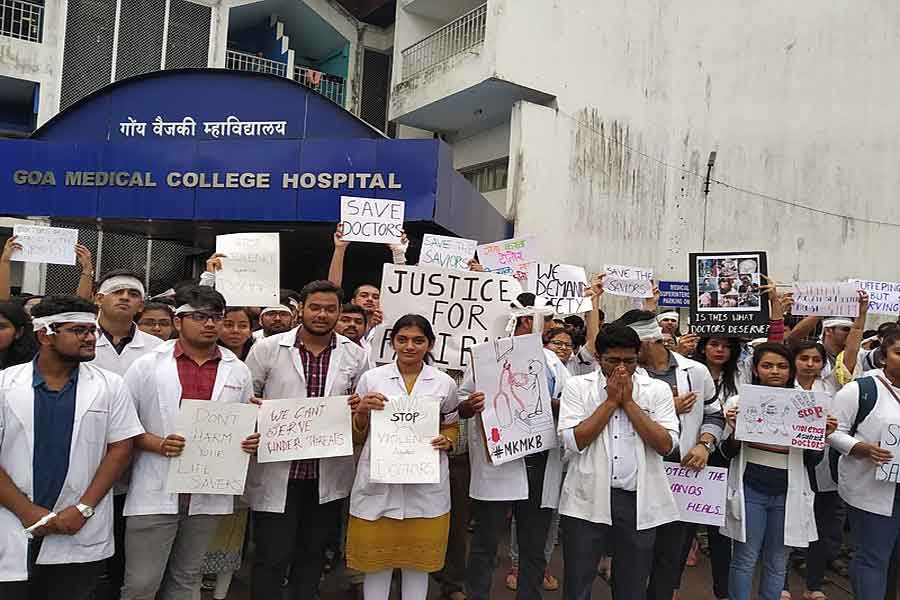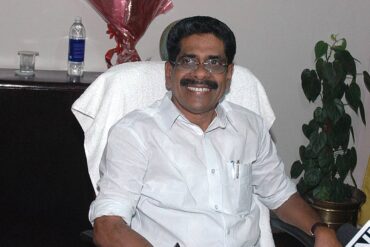
In the early days of my internship, while learning how to administer CPR to a patient, I asked my senior about determining the number of shots of atropine to be given to a patient. My senior, whom we addressed as Dada, replied with a deadpan face: “The number of shots depend on the number of relatives surrounding the patient and you at that time”. Before anyone rises up in arms, that’s a joke and there are many such lame jokes we doctors make to take the edge off from our heightened nerves owing to the intense and gruelling work schedules.
It is common knowledge that Indian doctors undergo one of the toughest and most demanding training years but even such training cannot prepare any doctor to face the challenges that come with the rickety healthcare system in India.
The doctor-patient ratio stands at an abysmal 1:1000 on average in most Indian states. The situation is worse in government hospitals, with these hospitals having to deal with the maximum patient load owing to the high cost of private healthcare. Many private hospitals shy away from admitting critically ill patients fearing backlash in case of a worsening of the patient’s health condition or resultant death.
Despite strict rules in place for private hospitals and procedures like signing of consent forms and other documentation, the chances of a physical onslaught can never be fully negated. In the case of Government hospitals, doctors don’t really have a choice.
Add to this the lack of infrastructure and facilities in most Government hospitals—the doctors here work from a position of massive disadvantage. When a doctor has to handle such a huge patient overload on a daily basis, mistakes are mostly unintentional. Not that there are no cases of medical negligence, but the law should take its course in such cases than allow mobs to dispense justice.
The doctor-patient relationship has undergone a massive change of late. Where previously patients used to view a doctor as an incarnation of God, today most of them see doctors as people out to extract money from the patients. Trust, which is the most essential part of a doctor-patient relationship, has taken a hit which explains why people resort to violence against doctors.
Some years ago, Aamir Khan’s TV show Satyameva Jayate had an entire episode on doctors and how they had resorted to unethical means and extorted money from their patients by doing unnecessary procedures and investigations. It was another blow to the already tainted image of doctors.
Last year, during Prime Minister Modi’s speech in London, he made a callous statement about Indian doctors having nexus with pharmaceutical companies and how they prescribed branded medicines to get benefits from these companies including foreign trips. These kinds of irresponsible statements made by people in positions of power and privilege have made the general public more sceptical of doctors.
The recent attack on two doctors in NRS Kolkata, where one of the doctors ended up with a fractured skull, was a critical moment in a long ongoing history of assault on doctors. The incident has turned into a nationwide protest and rightfully so, since the apathy of the government in the past had left us with no other option.
What is unfortunate is that political parties have hijacked even this movement and are using it to settle their petty political scores. On the one hand, the stubborn attitude of Mamta Banerjee has riled up the doctors to resort to extreme measures on the other hand, BJP is using every trick to aggravate the situation to gain political capital.
It is unfortunate that after the Armed Forces, even the doctors are being used as political tools. The biggest folly of turning the whole issue into a Mamta vs Doctors thing is that when all this is over, the doctors will remain in exactly the same position they were earlier in, if not worse. It is important that the doctors don’t lose sight of their actual goals and demand the government for concrete steps to ensure their security in future.
In 2017, Dr Kafeel Khan was falsely implicated in a case when 34 children had died due to shortage of oxygen supply in BRD Medical College, Gorakhpur. The Indian Medical Association (IMA), which did not support Khan till date has now released a statement where it has accepted that Dr Kafeel Khan was framed in what can only be described as a state-orchestrated conspiracy. More than a year after Dr Kafeel Khan was cleared of all charges, there is no clarity on when he could resume his practice or claim his dues. It is ironical that the same BJP government which was unjust to a doctor in its own state is talking about the injustice meted out to doctors in another.
The corporatization of hospitals has led to an increase in unethical practices like unnecessary investigations, specialist opinions (sometimes when it is not required), prolonging patient stay in hospital et al, which has made people wary of the medical practitioners. In countries like the UK and the USA, strict standards are set for doctors and even the smallest transgression and cases of negligence can lead to suspension.
This increases the confidence of patients as they know that they would not be subject to malpractices. In India, there rarely has been a case where a doctor has been punished for negligence. Maybe that is why the general public takes it upon themselves to punish doctors when they deem fit. The mob mentality which has become an essential part of our subconscious in the past few years has only made it worse.
Doctors should also reflect where they have gone wrong in losing connect with their patients. The sanctity of the doctor-patient relationship needs to be rebuilt from scratch. At the same time, the general public should accept that doctors are just as human and can make errors. It’s not fair to put us on a pedestal and then attack us at the next instant when we fail to meet the standards set for us.
It is equally important for doctors to avoid falling into the trap of political parties.






